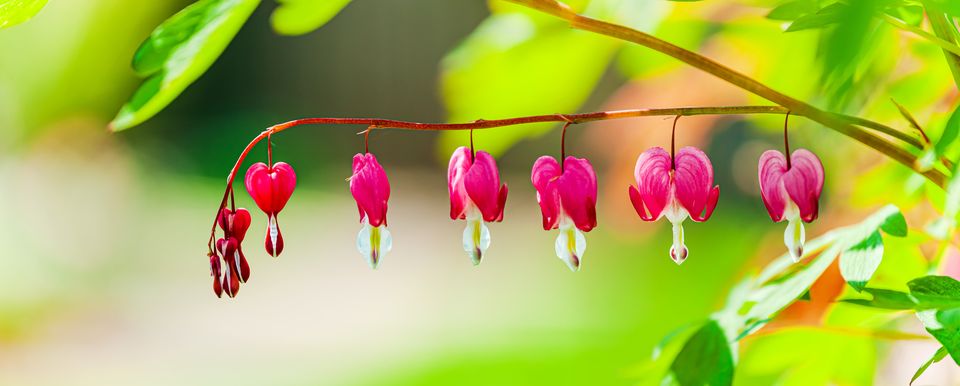As the darker days of November settle in, many people find themselves drawn to memories of those who have passed. November is the month of ‘all souls’, a time steeped in reflection and remembrance, and with Christmas on the horizon, many others will wish to ensure the resting places of loved ones are tended to and beautiful.
Recently, a reader wrote to me with a thoughtful question that echoes this sentiment.
“Hi Diarmuid,” they began. “I would like to do something with the family grave plot. Perhaps a sort of ‘rewilding’. I want to move away from placing disposable, temporary plants and rather cultivate the plot. The plot is very dry.”
This desire to create a lasting, meaningful space in a family grave is one I encounter often, and with good reason. The act of planting perennials or using drought-tolerant plants can create beautiful mini gardens along with creating sustainable ways to honour those who have gone before us. Planting these spaces in a way which reflects the spirit of a loved one can bring comfort to family and friends who visit.
So how do we go about it? When considering plants for a grave, it’s worth remembering that graveyards often have their own rules regarding what can be planted. These guidelines may limit the height or spread of vegetation, so be sure to check with cemetery caretakers first.
Traditionally, grave plots in Ireland were decorated with heathers and small, seasonal plants, such as cyclamen in autumn and winter, and primroses in spring. These low-growing plants provide colour but are modest enough to maintain a neat, respectful appearance. For those who’d like to explore other options, here are a few ideas:
Lavender: In dry, sunny plots, lavender not only adds gentle colour and fragrance but can be a beautiful nod to a loved one who enjoyed nature’s subtler tones. Lavender’s compact shape and resilience make it well-suited to low-maintenance graveside planting. A low-growing rosemary would make a nice alternative.
Hedging: A low hedge of box or yew around the plot offers a traditional feel, providing structure and marking the space without overwhelming it. Inside the hedge, any favoured arrangement of low planting will work, or alternatively gravel can be spread for a simple, clean scheme.
Personal touches: Consider the tastes and interests of the person being remembered. For a family member who loved to cook, a small tapestry of herbs — such as thyme, sage, or rosemary — might be a fitting tribute. For those who preferred bright, joyful colours, perhaps a compact rose or small ground-cover plant could offer year-round greenery.
In spring, you could even sprinkle a mix of wildflower seeds to grow a natural mini meadow. Native Irish wildflowers, like oxeye daisy and red clover, will soften the marble and stone of a cemetery, blending a touch of wilderness into a traditionally structured space.
Some maintenance will be required, of course, but wildflowers can add a uniquely Irish touch, connecting your loved one’s memory with the natural world around us.
Embracing sustainability with succulents and native plants: For drier, more exposed graves, drought-tolerant plants can be particularly effective. Succulents such as sedum and sempervivum add texture and subtle, shifting colours to a plot, particularly when soil quality is lean. Hardy succulents are exceptionally low-maintenance, thriving in sunny, dry conditions while adding quiet elegance to the plot.
Bulbs are another way to enrich the space. Imagine daffodils emerging each spring as a living memory, or a small flowering tree that blossoms around a meaningful date. Such additions not only create beauty but provide a habitat for pollinators, transforming a resting place into a source of life.
Memorial trees
For those seeking a different way to honour a loved one, many organisations now offer memorial tree planting schemes that allow you to dedicate a tree — or even a small grove — in memory of someone special.
Here are a few options:
The Wolfgang Reforest Mission: This social enterprise plants and maintains native Irish broadleaf trees in honour of loved ones. Each dedication comes with a digital certificate, personalised with the name of the person being remembered, as well as the coordinates of the growing forest in Co Wicklow, allowing family and friends to visit. [email protected]
Irish Hospice Foundation’s Remember Me Programme: The Irish Hospice Foundation offers a scheme to plant and dedicate trees at the Lakeside Wood in Naul, Co Dublin. For a donation, you can choose the tree species and personalise the certificate in memory of a loved one. hospicefoundation.ie
Reforest Nation: Through Reforest Nation, families can plant mini forests in memory of loved ones, creating a lasting legacy that will benefit future generations.reforestation.ie
Plant of the week
Fuchsia ‘Army Nurse’
Fuchsia ‘Army Nurse’ Hardy fuchsias are a gift at this time of year with their exuberant flowers. ‘Army Nurse’ is an old variety with a beautiful semi-double flower in a striking magenta pink and violet blue combo. Originally from South America, it is a frost-hardy compact variety growing to around three or four feet in height and spread. Attractive to birds, bees and butterflies, this nectar-rich flower will keep the pollinators happy late into the year.
Reader Q&A
I’ve a cherry blossom tree for 10 years but it never flowers. It’s in an exposed site — will it ever flower properly?
Cherry blossom
The lack of flowers could be due to its exposed location, as harsh winds and cold temperatures may be damaging the buds before they get a chance to bloom. You are probably better growing something more suited to your conditions. For example, a mountain ash or hawthorn will also flower in spring and are well-adapted to exposed conditions. If you really want a flowering cherry, you will need to find a more sheltered spot for it.
Submit your gardening questions to Diarmuid via his Instagram @diarmuidgavin using the hashtag #weekendgarden

